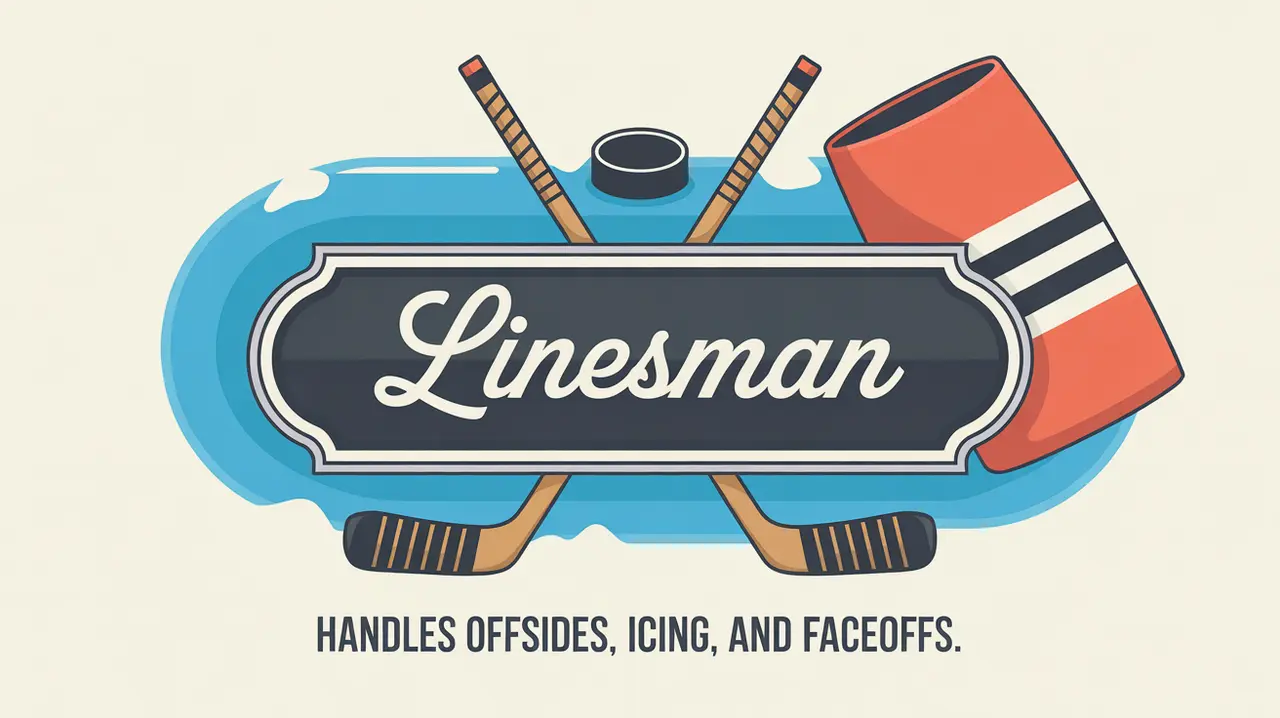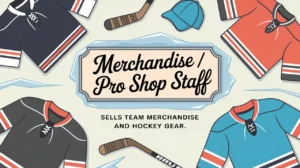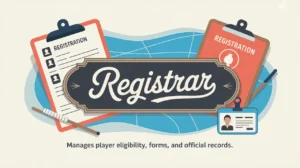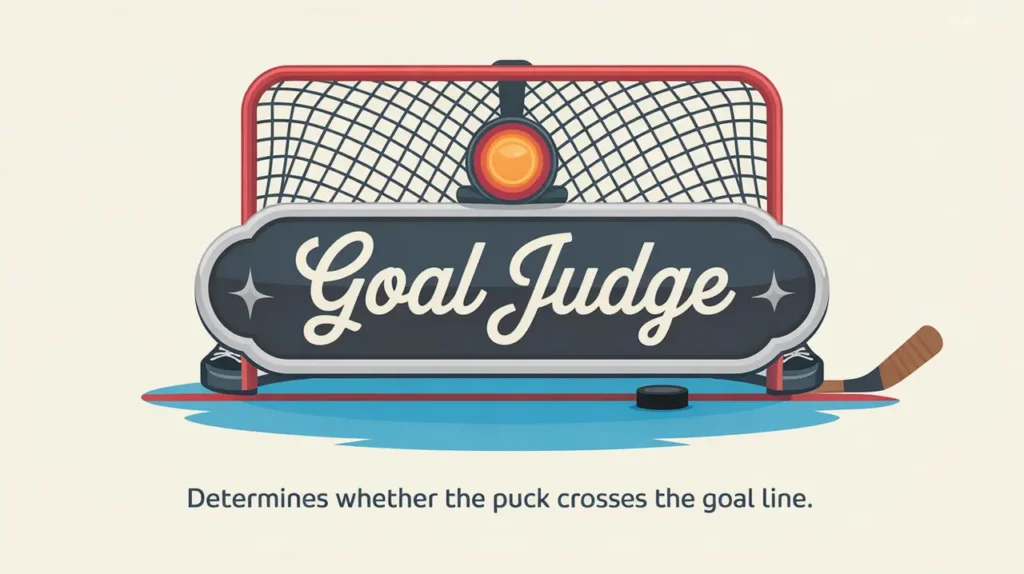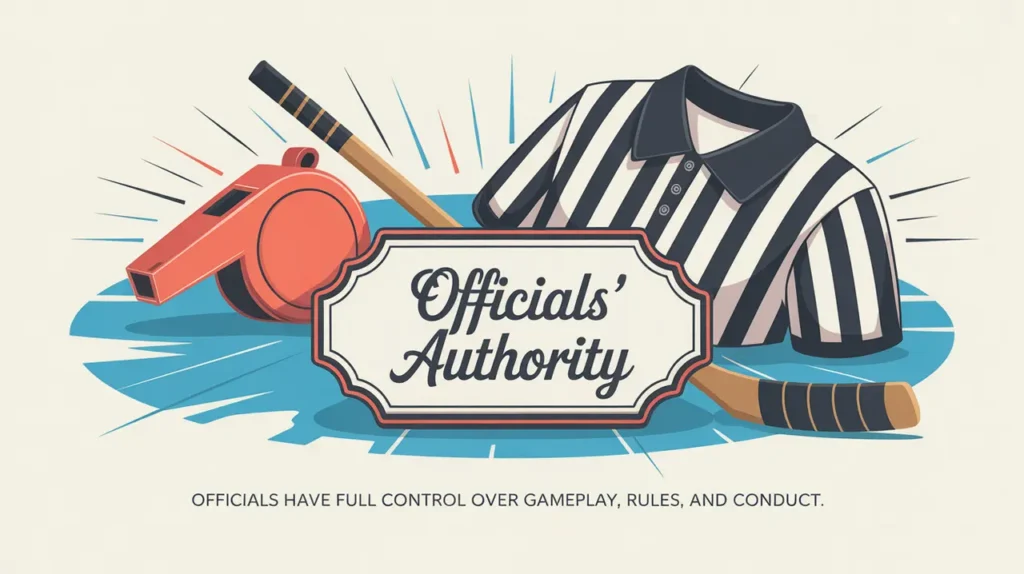Jim’s Intro to the Linesman
Hi folks, Jim here, the only commentator who was invited to be a linesman in a pickup game and fell asleep on his skates.
What is a linesman?
A linesman (or linesperson) is an on-ice official responsible for enforcing line-related rules, managing faceoffs, and supporting referees in maintaining order. While referees handle penalties and major decisions, linesmen watch the blue lines and red lines like hawks, calling offsides, icings, and illegal line changes.
They’re the unsung guardians of structure, ensuring the game follows the rules of space and timing. A good linesman can influence the pace and rhythm of a match without ever blowing a penalty whistle.
How does it work?
Linesmen influence the game through precise positioning, sharp focus, and quick decisions:
Offside Calls
- Linesmen are responsible for determining whether the puck enters the offensive zone before the attacking players.
- They straddle the blue line to get the best angle, raising their arm immediately for delayed offside or whistling the play dead for a clear violation.
Icing Calls
- Linesmen monitor when a team shoots the puck from behind their own side of the red line without it being touched.
- They race down the ice to see which team reaches the puck first under hybrid icing rules, making split-second decisions.
Faceoff Management
- Linesmen conduct most faceoffs, ensuring both centers line up legally, dropping the puck cleanly, and controlling cheating or false starts.
- Their timing and consistency are key to fair draws.
Line Changes and Too Many Men
- They watch the benches to enforce proper line changes, ensuring players don’t jump too early or interfere with play during substitutions.
Supporting Referees
- Linesmen assist in breaking up scrums, reporting major or match penalties they observe, and offering additional eyes on disputed plays.
- While they can’t call most penalties, they can advise referees on incidents they witness.
Common Situations Involving Linesmen
- Tight Offside Calls: Watching for players’ skates vs puck position at the blue line.
- Icing Races: Judging touch or no-touch under pressure.
- Neutral Zone Faceoffs: Conducting fair draws after infractions.
- Too Many Men on the Ice: Watching line changes carefully to flag violations.
- Breaking Up Fights: Skating in strategically after players tie up.
How do you make good decisions with it?
Great linesmen rely on positioning, precision, and poise.
- Stay on Your Line: Positioning is everything for accurate offside calls.
- Decide Instantly: Hesitation creates confusion. Make the call with confidence.
- Keep Neutrality: Fairness builds trust with players and coaches.
- Control the Faceoff: Be consistent with your drops and firm with infractions.
- Communicate Quietly: A quick word with players or benches often prevents bigger issues.
How do you master it?
Mastering the linesman role requires elite skating, split-second judgment, and unwavering focus. Linesmen train to maintain perfect angles, stay in motion without interfering, and read plays early to anticipate where to be. They study rules deeply and develop the confidence to make close calls under intense pressure.
What does it look like when done right?
A great linesman glides to the blue line, locks in on the play, and calls a razor-close offside without hesitation. On icing, they skate at full tilt to the goal line, make the right touch decision, and keep the game moving. During scrums, they step in at the perfect time, firm, calm, and in control.
Commentator’s Corner
Jim’s Take
Linesmen are like the blue line itself: if they’re doing their job, you don’t think about them. Miss one call, though, and suddenly everyone’s an expert.
Parent Tip
If your player is interested in officiating, learning the linesman role builds discipline, skating strength, and game sense. It’s a great entry point into higher-level officiating.
Player Tip
Respect the linesmen. Their calls shape the flow of the game, and arguing rarely changes anything. Adjust your play to their standard, not the other way around.
A Final Thought
Linesmen are the quiet architects of hockey’s structure, enforcing the invisible lines that keep the game fair and fast. When mastered, the role blends precision, skating, and authority, turning split-second decisions into the backbone of smooth, competitive hockey.

